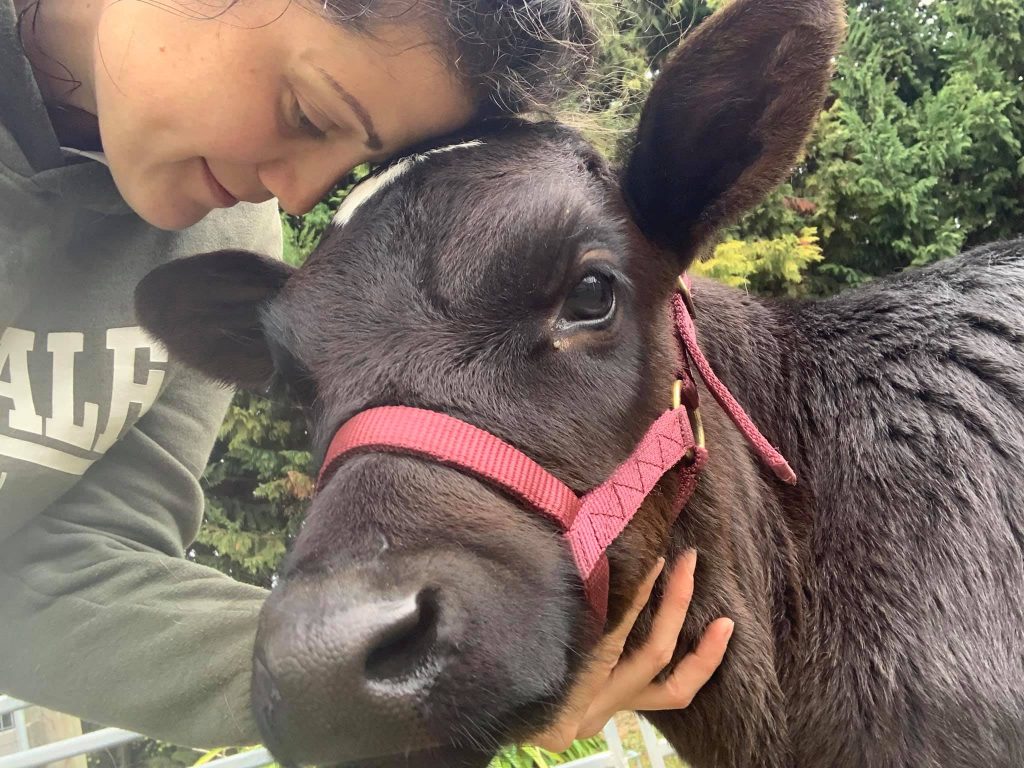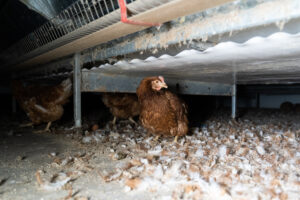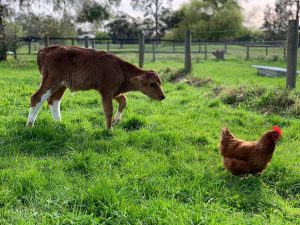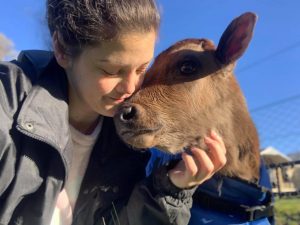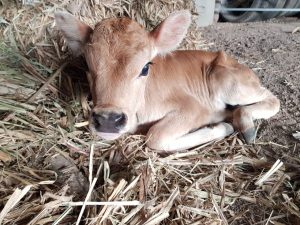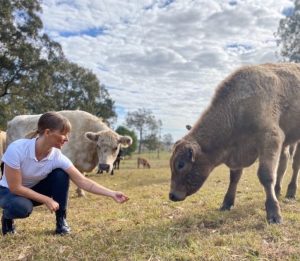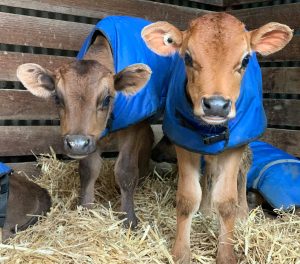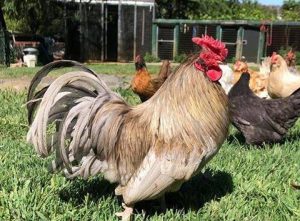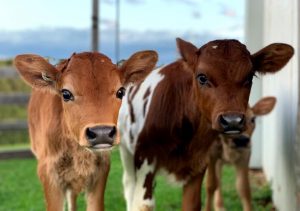Have you ever considered gently training your cow to be on a harness? Being able to have your cow on a harness comes with some great perks! It makes life for both you and your cow so much easier when it comes to vet visits and general maintenance such a tick and fly treatment. Having your cow on a harness also gives you the opportunity to take your cow to the beach or an outside café, like one of our adopters Jac’s did with her calf Ferdi.
We have set out key information in order to halter train your cow or calf and when you adopt from us you can request that your calf already be trained ready for your arrival.

Firstly, we want the halter to be a good experience for the animal so they are happy and willing to wear their halter in future. Find a treat they really like, such as carrot, banana or strawberry, and cut it up into small cubes. Then, close the noseband and buckle it up first. Use a treat to lure the cow through the noseband and once they put their nose through the hole, reward them with the treat. Repeat a few times until they are super comfortable with that step.

Next, once the noseband is on, have someone feed them treats (or you can just give them a small handful to keep them occupied) whilst you do up the rest of the halter properly.
Once your cow is wearing the halter, give them a few treats for having it on, and then, take a couple of steps and if they follow you, reward them with a treat. Take a few steps again, and reward them for following. Don’t put a lead on them just yet. Get them used to just following where you walk and reward them for doing so.
Once they are good at this, then you can introduce the lead. In this video, when our foster carer Jac was halter training a calf named Bear, Bear smelled the lead and got nervous (likely because it smelled like dog due to Jac being a dog trainer too) so note to use a washed leash if possible. Remember it is a learning experience for both you and your cow, so don’t be disheartened and persevere.
The most important thing to remember is that you should never use the leash to pull your cow or calf around. This will make it a very unpleasant experience for them, which means they will be less likely to want to walk with you. And we can assure you when your calf is a few months old, they will far outweigh you and you won’t be able to win by dragging him around. Think of the leash as a safety device, like a seatbelt. The seatbelt is worn in case of an accident, and the leash should be worn in case something happens. For example, something happens that spooks your cow and his instinct is to bolt. This could be dangerous, so at least you have a hold of him by the leash to prevent him from just running off in whatever circumstance may arise.

So once you’ve attached the leash, make sure you keep it loose so there is no pressure or tension on it. Then repeat as before, simply take a few steps at a time, and reward your cow for following. As time goes on, you can take more and more steps in between rewards so your cow learns to walk with you for longer periods. Make sure you practice changing directions and rewarding your cow for following these as well, and you’ll be out on the promenade together in no time!

